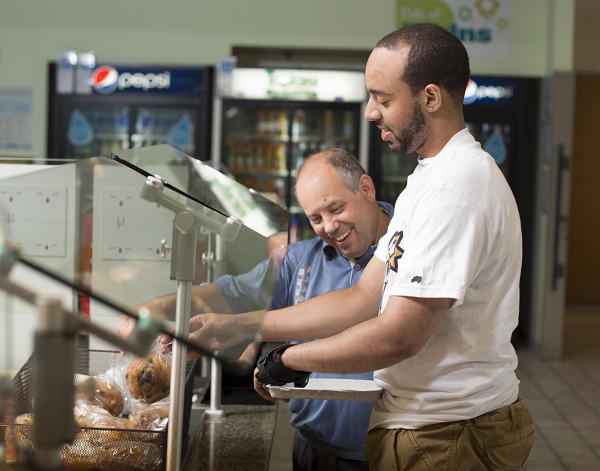
Suppose you needed help to pull up your pants and fasten your belt.
For most of us, those two tasks come easily. We don’t even think about them. For many stroke patients, however, being able to accomplish those two activities without help would represent a remarkable improvement in the quality of life—a level of independence they never thought they might attain.
Thanks to a glove-like splint invented by Joseph Padova, OTR/L, an occupational therapist specializing in stroke rehabilitation at MossRehab, many stroke patients are able to do those two things and more, such as tie their shoelaces, open jars, fold laundry, wrap presents or hold a wallet open to remove cash or credit cards.
Nathaniel H. Mayer, MD, director of the Motor Control Analysis Laboratory and co-director of the Neuro-Orthopaedic Program at MossRehab, identified the need for an unobtrusive device that would allow stroke patients to do those very things. Padova took it from there.
“We needed a prosthetic for stroke patients,” says Padova, who ran a maintenance program for stroke patients at MossRehab. “A lot of our stroke patients could move their hands and have an active grip force, but they couldn’t open their hands (due to muscle weakness or spasticity, a condition resulting in muscle stiffness, tightness or lack of control). We were wondering if we could make a splint that could help them open their hands in functional ways. We ended up creating a splint that allowed patients to use their grip strength to close the hand and hold things they would commonly use during daily activities. The splint had enough opening force so that they could open their hand and let go of things.”
Padova, who also has experience as a clinical specialist for upper limb amputee training—and is a self-professed tinkerer, created the prototype splint out of cheap plastic splinting materials, heated in water and molded to the patient’s hand.
Remember the pants and belt example? When Padova tested the splint on a patient, that was the very first victory. “He said, ‘I was able to pull up my pants and put my belt on for the first time in 15 years.” (The patient liked the prototype so much, he tried to keep it.)
However, the prototype splint wasn’t durable enough. “We needed a material that would last,” Padova says.
That material came from an unexpected source.
“My brother-in-law was into fishing,” Padova recalls. “One time, we were out fishing and I saw someone fishing with a really thin rod. The fish were jumping all over the place and the rod wasn’t breaking. I asked him, ‘Can I see this?’ I ended up buying one.”
At first, Padova and his son tested a piece of the rod by crafting it into a slingshot. “About two weeks later,” he says, “I’m thinking, this might be a good outrigger for the splint.” (The outrigger is the spring-like part of the splint that helps the patient open the first two fingers of the affected hand. Elastic in the glove holds the thumb back.)
Padova cut and added one piece of fishing rod to a prototype splint. He found it more than strong enough to do the job. He showed a newly modified splint to Arthur Gershkoff, MD, clinical director of the Stroke and Neurological Diseases Program at MossRehab, who recommended that he apply for an Albert Einstein Society grant. The Albert Einstein society awards grants to harness “the power of Einstein employees and physicians to solve some of today’s most exciting healthcare challenges.”
Padova received support from the society, which helped him secure a patent for the Einstein Healthcare Network and find a manufacturer willing to translate the idea into a polished, saleable product. “We went through a bunch of manufacturers until we found one, Tiburon Medical Enterprises, which was patient enough to work with us.”
That was in 2011. The splint is now sold globally, and Padova's creativity has been recognized. In 2013, Padova was a finalist in the Best Medical Device category in the Innovation Awards sponsored by Philadelphia Business Journal and UnitedHealthcare.
Padova finds it gratifying that the splint he invented is now widely available. He never had much doubt that he was onto something that could make a big difference in people’s lives.
He recalls one incident in particular, when he was still experimenting with the splint in its most rudimentary form.
“We got a phone call from a mom whose child had had a stroke in utero,” he says. “I made a splint for him. I remember he picked up a block and stacked it on top of another one. All of a sudden I heard the mom gasp behind me.” At first Padova thought something was wrong. Quite the contrary. “She said to me, ‘You don’t understand. This is the first time he has used his hand since he was born.’”